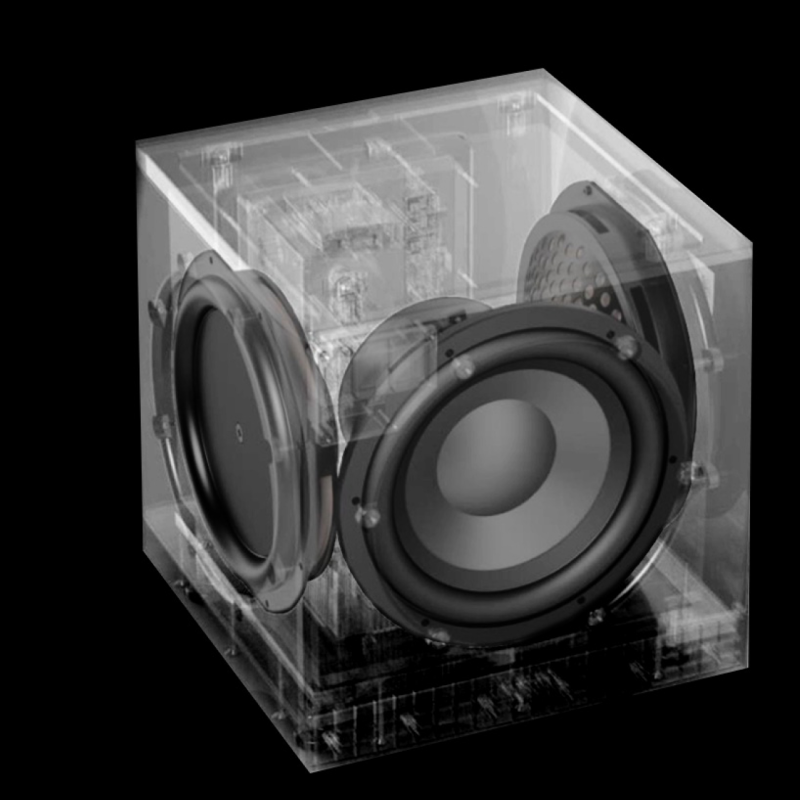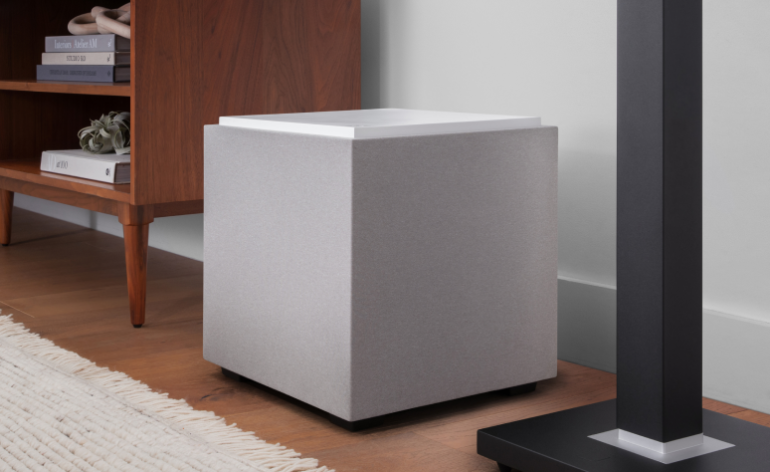Definitive Technology DN8 and DN12 Subwoofers Overview
Definitive Technology updated their Descend line of subwoofers with the addition of the DN8 and DN12 offerings. These complement the DN15 and DN10 already offered by Definitive Technology. The numbers in the model names indicate the size of the driver in each sub. These are bass-reflex designs but instead of ports, they have dual passive radiators. Let’s take a closer look at these subs.

What’s a Passive Radiator?
When we think of bass-reflex subwoofer designs, we often assume a ported box (one with a hole in it somewhere). But it doesn’t have to be. Bass-reflex just means that the air within the box can move as the driver does. In the case of the Definitive Technology Descend line, they use passive radiators. A passive radiator is a driver that doesn’t have a motor or a magnet. It is simply the cone, the surround, the spider, and the frame.
As the driver moves in and out, the passive radiator allows the air pressure within the cabinet to stabilize by moving in the opposite direction. The driver pushes out, the passive radiator sucks in. The driver pulls in, the passive radiator is pushed out. In the case of the DN8 and DN12 subwoofers, there are two passive radiators in each sub with a single driver. This allows the subs to play lower and louder than they might considering the size of the enclosure.
Performance of the Definitive Technology DN12 and DN8 Subwoofers
The DN12 sports a 500 watt continuous/1500 watt peak Class H amp while the DN8 has a 200 watt continuous/500 watt peak Class D. The DN12 is rated down to 25Hz while the smaller DN8 is only rated to 35Hz. Each has variable volume and crossover controls as well as line and speaker-level inputs. Both have connected rubber feet that can’t be adjusted for leveling (an odd choice).

There are some differences in the features of these two subwoofers. The DN8 only has a phase switch (0/180) while the DN12 has a variable phase control. The DN12 has 56-bit processing to prevent distortion or damage to the driver as well as provides three different tuning modes (flat, deep, loud). The DN12 also has a remote that the DN8 lacks.
Our Take
Subwoofers are an increasingly competitive market. People want low and small, but they don’t want to pay too much. The DN8 comes in either white or black gloss finish while the DN12 only comes in black. The DN8 retails for $500 while the DN12 will run you $1200. The DN8 is just over a cubic foot (12.8” x 12.0” x 13.1”) while the DN12 is larger at around 18-19″ in all directions (18.72″ x 18.04″ x 19.09″).
When we compare these subs to other subs on the market, they come out pretty well. They don’t play as low as some, but they cost less. They aren’t as small as some, but they play louder and cost less. There are always drawbacks when trying to make a cost-effective subwoofer. The Definitive Technology DN12 subwoofer costs a lot more than the DN8 but it has a lot more features, functionality, and plays lower. For our money, the DN8 is where it is at. It will only really shine in a small room, but $500 for ~35Hz performance is pretty great. Could it be smaller? Sure. But it’d need a bigger amp and DSP to sound as good. And we are willing to bet that this is a tradeoff consumers will be willing to make.
For more information, visit DefinitiveTechnology.com.


